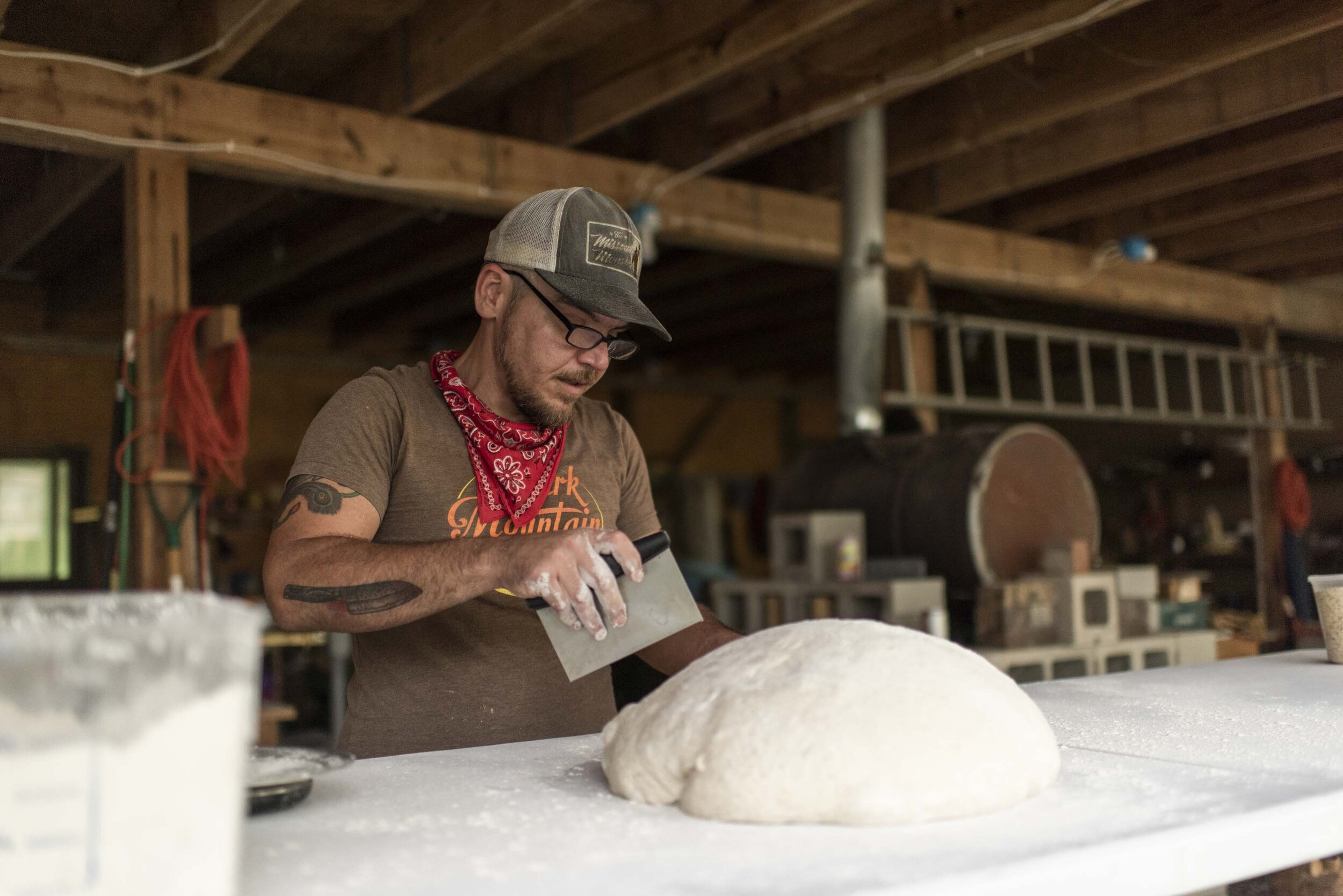
A little background
The history of bread is very long, very complicated and honestly, not all that complete. I'm not here to give you a history lesson, but attempt to inform you of why I do what I do, and how I do it.
A taste of history
Bread and life are synonymous. For as long as humans have purposefully grown plants and grain, bread has been a staple in our diets. But no one really knows when, where or how bread came to be. It was almost certainly that some ancestor in the area around Egypt left a bowl of some coarsely ground grain somewhere it got wet and after a while began to bubble. I like to imagine they thought to place that bowl near a fire to dry it out., resulting in the precursor to what I make today.
Tradition
Though much of the equipment used has evolved considerably, by and large, this is how I make bread today, so many thousands of years later. I take a grain that has been milled on stones, mix it with water and salt and a leaven. I heat a stone structure with fire fueled by wood I harvest. The rest is all in the timing.
Patience
As with all things, our drive for faster methods for making cheaper bread caused us to lose what may be the most important ingredient in bread-making. Time. Wheat itself is a near-perfect package of nutrients and calories, but to our bodies, the nutrients packed within a wheat berry are not very bioavailable. Unless properly fermented.
Sourdough
“Sourdough” is not so much a descriptor of flavor as it is the method of leavening or rising. And for most of history it was THE way. Sourdough cultures contain many, many different kinds of bacteria and yeasts, microbes doing their part to give bread that unmistakable aroma, the airy lightness in the crumb, depth of flavor and heavy crust. The culture I currently use is 35ish years old from San Francisco.
Stone & Fire
I harvest all the wood I burn in the oven locally, usually using fallen branches or otherwise somewhat useless treetops when folks harvest for trunk wood. The oven is a monster “black” masonry oven. Black ovens here mean the fire is built inside the baking chamber, cleaned out and the bread is baked using residual heat in the brick. It was built by Richard Knapp at his farm/mill Creekside Miller. You can see pictures of the entire build at his website.





